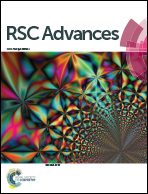Limitation factors for the performance of kesterite Cu2ZnSnS4 thin film solar cells studied by defect characterization
Abstract
In this work, photoluminescence (PL), admittance spectroscopy (AS) and drive-level capacitance profiling (DLCP) were performed to analyze the defect properties of a Cu2ZnSnS4 (CZTS) solar cell. Compared to a high efficiency CuInGaSe2 (CIGS) solar cell, the absorber of the CTZS device has larger potential fluctuation which can be attributed to the co-existence of a high concentration of deep acceptor (CuZn) and deep donor (ZnCu) defects. The density of the interface states in the CZTS device is also orders higher than that in the CIGS device. These high density defects (both in the bulk and at the CZTS/CdS interface) will induce a large loss in the open-circuit voltage (Voc), resulting in a lower performance of the CZTS device. We suggest that defect control can be a possible solution to reduce the potential fluctuation induced by acceptors. To overcome the potential fluctuation induced trapping effect for electrons by the ZnCu donors, a graded conduction band similar to CIGS will be good to eliminate electron localization.


 Please wait while we load your content...
Please wait while we load your content...